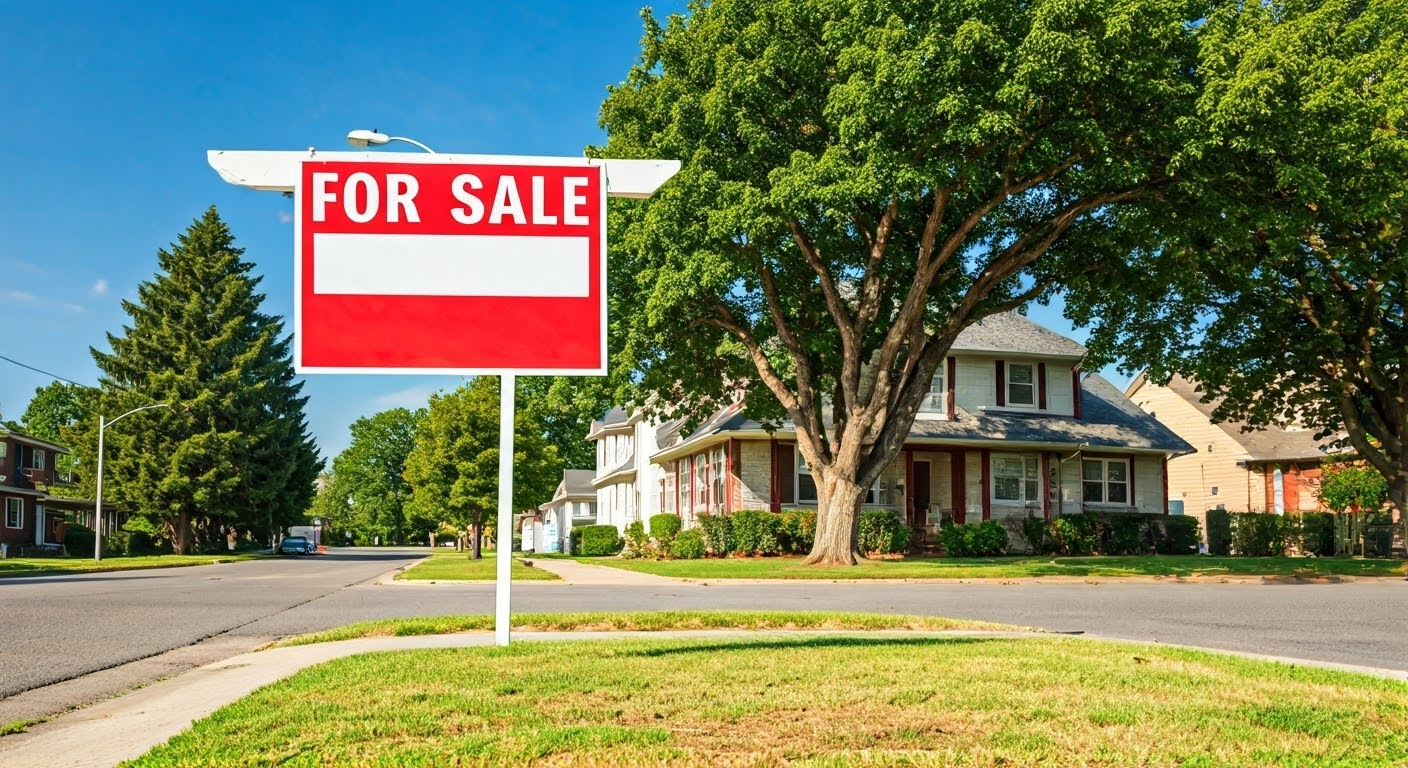Dealing with foreclosure properties can be tough, but it can also bring good rewards in real estate. These chances usually come up when someone misses their mortgage payments, leading to auctions or the bank taking the property back. Before putting one of these properties up for sale, it’s important to take the right steps to make everything go smoothly. Having a good home inspection, knowing the property’s market value, and fixing any legal problems can really help. With the right approach, foreclosure properties can be smart choices for buyers and sellers.
Key Highlights
- Foreclosure properties can offer great value but require careful preparation before listing them for sale.
- Understanding the foreclosure process and common reasons for foreclosure is crucial for property owners and agents.
- Steps like property inspection, market valuation, and addressing legal issues are essential for smooth transactions.
- Securing the property, conducting a title search, and making necessary repairs are vital preparatory measures.
- Effective marketing strategies, including leveraging online platforms, can help attract prospective buyers.
- Financial risks and legal implications necessitate consulting experienced real estate agents and attorneys.
Understanding Foreclosure Properties
Foreclosure properties can be tricky in the real estate market. These homes come from mortgage holders who have missed payments. When this happens, lenders take control of the property. This situation creates special chances for buyers and sellers because of lower prices.
However, selling a foreclosed home has its challenges. It is essential to understand its condition and deal with legal issues. Buyers might need to take on some risks or negotiate terms before finalizing the deal. Learning more about what foreclosure means is the first step for successful transactions.
What is a Foreclosure Property?
A foreclosure property is real estate that lenders take back when the original owner does not pay their mortgage payments. When homeowners can’t keep up with these payments, lenders start the foreclosure process. This process transfers ownership of the property to the lender or another buyer.
The timeline for foreclosure can be different based on state laws. There is usually a time for homeowners to fix missed payments. If they don’t, the lender can sell the property through an auction or as Real Estate Owned (REO) to recover their money.
These properties are often sold for less money, making them appealing to cash buyers and investors. However, they are generally sold in “as-is” condition. Buyers and sellers should understand the challenges in the local market, the costs for repairs, and any legal issues before going ahead with a purchase or sale.
Common Reasons Why Properties Go into Foreclosure
Foreclosures mainly happen because property owners face financial problems. Losing a job, having a medical emergency, or dealing with other unexpected costs can make it hard to keep up with mortgage payments. When this happens, lenders must step in to recover their money.
Besides personal issues, rising property taxes or high-interest rates can drive homeowners to foreclosure. In some cases, the market may lower the home’s value, leaving owners with mortgages higher than what the property is worth. Lenders work closely with the Department of Housing to handle these situations.
Poor financial management and not addressing mortgage changes can lead to foreclosures too. Understanding these triggers helps sellers get ready and shows how important it is to deal with financial duties quickly. For buyers, being aware of these factors is crucial for managing risks when buying foreclosure properties.
Preparing to List a Foreclosure Property
 Before putting a foreclosure property on the market, sellers need to get ready well to make the sale easy. First, checking the home’s condition and knowing what repairs are needed is very important. This helps attract buyers and lets sellers set fair prices.
Before putting a foreclosure property on the market, sellers need to get ready well to make the sale easy. First, checking the home’s condition and knowing what repairs are needed is very important. This helps attract buyers and lets sellers set fair prices.
Next, figuring out the property’s market value helps keep expectations realistic in the real estate market. It is also important to think about legal issues, work with lenders, and use good marketing strategies to get the listing done. These steps are key to making foreclosure deals successful.
Assessing the Condition of the Property
Evaluating the condition of the property is an important step when selling. A home inspection looks for issues like structural damage, plumbing problems, or electrical faults. Sellers can then choose if they need to make extensive repairs to boost appeal.
Foreclosure homes often have a lot of wear and tear from neglect or vandalism. Finding these damages early can help avoid surprises during negotiations. A house that is not well maintained can turn away potential buyers and decrease its marketability.
To make the process easier, you should hire professionals for a property inspection. They can give you useful information on whether fixing issues like roofing problems or dirty interiors will give you a better return on investment. With this information, you’ll know the best ways to present the property on the market.
Estimating the Market Value
Knowing the market value of your foreclosure property is very important. This value shows what buyers are willing to pay. It depends on things like the local market and the home’s condition. Having accurate estimates helps both buyers and sellers make good choices.
Start by looking at similar properties in your area. If other homes sold recently, their prices can help set your expectations. Working with an experienced real estate agent can also help you find a price that is competitive but still realistic.
Remember that foreclosure sales often sell for lower prices because they are sold as-is and might need repairs. If you price the property too high or too low, you may lose interested buyers. Finding the right price balance is key. It helps attract more buyers while keeping the property profitable.
Essential Steps Before Listing
 Preparing well is very important before putting a foreclosure property on the market. Taking steps like securing the property and solving legal issues can help make the sale smoother and attract buyers.
Preparing well is very important before putting a foreclosure property on the market. Taking steps like securing the property and solving legal issues can help make the sale smoother and attract buyers.
Making sure the home is safe, doing a title search, and handling legal challenges are key first steps. Also, making necessary repairs and staging the property nicely boosts its appeal. By following these steps, sellers can present the home better while reducing delays and problems during the sale.
Step 1: Secure the Property
Securing the property is the first important step when getting it ready for sale. Many foreclosure homes, called REO properties, need protection from vandalism or unauthorized people living there. This helps to make a quick sale.
Start by making the property hard to enter for trespassers. You can do this by changing locks, putting in security systems, and fixing broken doors or windows. If the previous owner does not leave, you may need to start the eviction process, which can take some time.
A well-secured property keeps its good condition and also builds buyer confidence. Real estate agents who work with lenders often make sure these security steps are done. This helps avoid delays in selling. Buyers are interested in properties that seem safe and have fewer legal issues.
Step 2: Conduct a Title Search
Running a title search is very important when you get a foreclosure property ready for sale. This process checks who owns the property and points out any unpaid liens or property taxes from the previous owner.
A careful title search helps you avoid surprises that could keep buyers away. It makes sure the home has no claims from lenders, government agencies, or others. If there are problems with the title, spotting them early allows sellers to fix issues quickly.
Get help from a real estate attorney or title company for this task. Their knowledge ensures everything is correct and makes it easier to list the property successfully. By tackling title-related problems early, you can prevent costly surprises and reassure buyers that the property is a good investment.
Step 3: Address Any Legal Issues
Dealing with legal issues before you list a foreclosure property is very important. These homes can come with many legal problems, such as disputes over ownership and issues with past homeowners.
Work together with a real estate attorney to understand the legal details. They can help you manage the foreclosure process effectively. An attorney can assist with foreclosure listings, handle unpaid debts, and make sure all your documents are ready. By following the rules, you build trust with buyers.
Also, some government agencies might have specific rules for selling foreclosed properties. Taking care of these before listing can help you avoid delays later. By following these steps, you ensure a smooth real estate transaction and reassure buyers.
Step 4: Make Necessary Repairs
Fixing your property properly can increase its value and make it easier to sell. A property inspection can help find important repairs, like fixing damaged walls, broken pipes, or bad wiring. Many buyers will avoid homes that need a lot of work, so getting your property ready is very important.
Start by focusing on key improvements instead of trying to change everything in the home. Take care of any big issues and make sure the condition of the property is good enough to live in. Painting the walls and handling smaller repairs can also make the home look better.
Even though foreclosure properties are sold without changes, doing some renovations may help attract higher offers from motivated buyers. Spending time and resources on these repairs can make your property stand out in the real estate market.
Step 5: Stage the Property for Sale
To attract serious buyers, it is important to stage a foreclosure property for sale. A clean and well-kept home shows its potential. This helps buyers see themselves living there.
By decluttering, arranging furniture, and fixing visible problems, the space becomes more appealing. This can attract potential buyers in the real estate market. If your budget allows, think about professional staging. Even small decor changes can make a big difference.
Well-staged properties do better than poorly presented ones. This can make negotiations easier, speed up the sales process, and draw more interest. A staged home doesn’t just impress buyers; it also shows them the property is in good condition and worth the price.
Marketing Your Foreclosure Property
 To sell a foreclosure property well, you need good marketing strategies. It’s important to make your listing attractive and choose the best platforms to use.
To sell a foreclosure property well, you need good marketing strategies. It’s important to make your listing attractive and choose the best platforms to use.
Focus on the key features and price benefits to attract buyers who want good value. Using online platforms also helps get more eyes on your property, making it easier for buyers to find it. By taking a well-rounded approach, you can boost your chances of a fast and profitable sale.
Effective Advertising Strategies
Advertising is very important when selling a foreclosure property. You should highlight the unique opportunity to buy real estate at a lower purchase price. It’s also helpful to promote features, such as a great location or investment potential, to attract buyers.
Foreclosure sales, like public auctions, can help generate more interest. Make sure to announce these events widely to get more buyers to show up. You can also use traditional methods like print media and flyers in busy areas to reach more people.
The main goal is to show the value of the home while increasing awareness of the local real estate market. Good advertising creates interest and leads to better offers.
Leveraging Online Platforms
Engaging online platforms can really increase the number of potential buyers you reach. Listing services like the MLS often show foreclosure listings. This makes them a popular choice for house hunters and real estate investors.
Use high-quality images and clear descriptions to show the property’s value. Include details about its condition, real estate transaction terms, and financial benefits. Also, platforms that focus on auction processes or foreclosure sales help to get more attention.
Social media and email marketing can also spread the word about the property to buyers looking for investment opportunities. Today, having a strong digital presence is very important for successful sales.
Conclusion
Listing a foreclosure property requires good planning and preparation. You should understand the foreclosure process well. Check the property’s condition and take care of any legal issues. This will help you sell it successfully. Staging your property properly and using strong marketing strategies can attract more buyers and increase your profits. Remember, doing this right will help you meet legal requirements and make your property stand out in the market. As you start this journey, focus on being thorough and clear to handle the challenges of foreclosure listings effectively. If you want help with listing your foreclosure property, feel free to ask for expert support.

